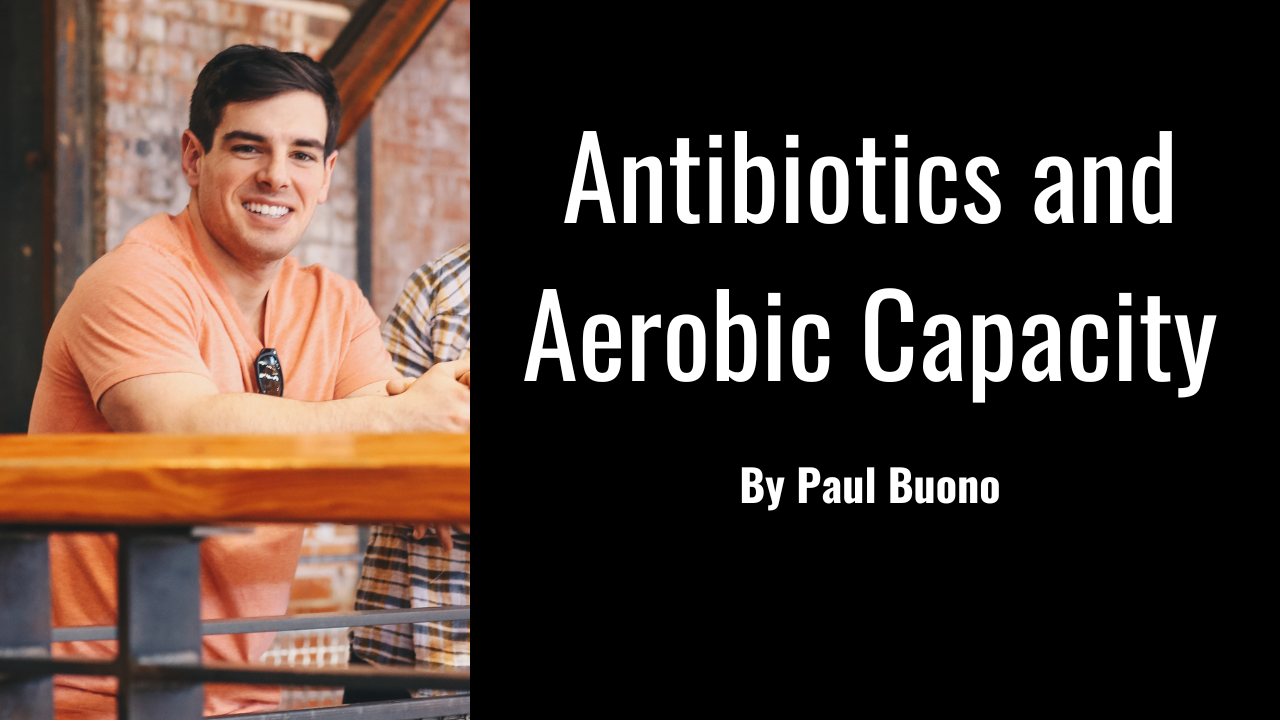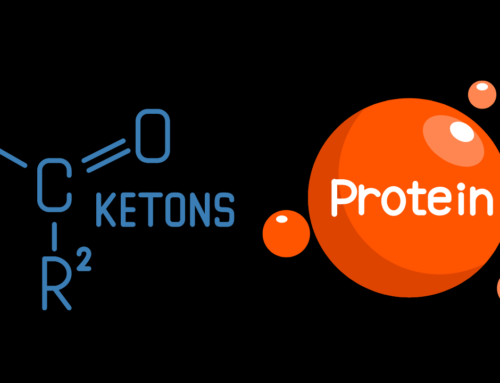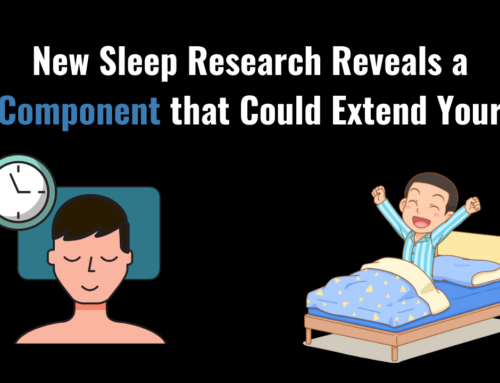Every good scientific experiment starts with a question.
Such as, “Does Joannie love Chachi?”.
Followed by stating a hypothesis.
My hypothesis states that “Joannie does, in fact, love Chachi.”
And then, science can begin.
All these shenanigans just to say that Dr. Mike T Nelson had a question.

Dr. Mike has a client that had been lining up her previous couple of months of training toward a 5K row time trial. She was scheduled to perform this test on Wednesday, June 15, 2022. However, on Friday, June 10, 2022, she was bitten by a dog. She was prescribed 500mg of the antibiotic Cephalexin three times per day for ten days.
Here is where the question comes in.
Dr. Mike had read the literature on the effects of antibiotics on exercise performance in mice. In mice, the data is conflicting. In humans, the data is limited. This indicates a perfect time to run a case study! He wondered if there would be a change in performance if she retested her 5K row after the ten days on antibiotics without supplementing probiotics. Probiotic supplementation would be a confounding factor by replenishing certain types of beneficial gut bacteria.
This is what the process looked like:
- Thursday, June 9th – 5K Row @ RPE 8/10
- Friday, June 10th – Dog bite; Prescribed Cephalexin 500mg (ABX), Take 1 Capsule by Mouth 3 Times Daily for 10 Days.
- Wednesday, June 15th – 5K Row TT
- Sunday, June 19th – Last day of ABX treatment.
- Tuesday, June 21st – 5K Row TT Repeat
- Thursday, 23rd – 5K Row @ RPE 8/10
Mike’s hypothesis was that her 5K row time trial would not decrease.
My hypothesis was that her 5K row time trial would decrease.
Dr. Sara Campbell, the director of the Kinesiology and Applied Physiology program and head honcho of the Exercise and Gastrointestinal Health Laboratory at Rutgers University, hypothesized that her 5K row time trial would not decrease.
2 nerds vs 1 nerd- who will win the battle?
I will let you in on a personal secret. I did not feel confident after this.
Results of the 5K Rowing Test
Before her 5K row TT on June 15th, her previous PR was 21:34.3, which occurred at the end of February 2022. On June 15th, she hit a new PR of 21:15.9, 5 days into her course of antibiotics. Two days after the antibiotic treatment was over, on June 21st, she rowed a 21:35.5. This was 19.6 seconds slower than just 5 days prior.
With just these data points, things can be a bit confusing to tease out.
We see an improvement in aerobic capacity after 5 days of antibiotics, but we see a decrease just two days after the course of antibiotics. What gives?
One issue is that there were about 3.5 months of training between her PR from the end of February 2022 and her new PR after 5 days of antibiotic usage. No testing occurred between these two dates. This creates ambiguity in the reliability of her 5K row PR. Her 5K row PR could have been faster before taking antibiotics.
Luckily, we have more data to go off.
These are just two data points in June. We also have some data points on 5K rows completed at RPE 8/10 instead of time trial effort. See below:

As you can see, just another two days after the drop in performance, we see an 11.6-second improvement at a lower relative intensity.
Woah!
If we look at the data just from June, the trendline is all over the place with no correlation between 5K row performance and the date it was completed (peep that R-squared value on the graph 🤓).

In English Please You Nerds
We are seeing the natural variation in human performance from session to session, even with the addition of antibiotics without supplementation of probiotics. To further drive this point home, I took the data from the past year to see if we saw a similar pattern without antibiotics.

What happens?
Variation.
Variation everywhere!

Just like weight loss, or any other metric that we track in the fitness world, exercise performance isn’t perfectly linear.
As we introduce a lot more data points (n = 37 to be exact), we can see that over the year, there is a decrease in 5K time, indicating an improvement in performance with a moderate to strong correlation.
If you zoom into June, that small time frame where we couldn’t tell what was going on becomes very clear that antibiotics without supplementation of probiotics had no discernible effect on her aerobic capacity.
So, I concede.
Dr. Mike and Dr. Campbell were right, and I was wrong.
I will hang my head high that both have way more experience than I do comparing animal data to human data.
In an interview with my graduate school advisor, Dr. Campbell, she highlighted where I went wrong.
One of the biggest things I forgot when making my hypothesis is that in antibiotic animal trials, the animals are typically given a cocktail of three to five broad-spectrum antibiotics to ensure that all or at least most of the bacteria in the gut microbiome are annihilated during trials (1-4).
This differs from Dr. Mike’s experiment because his client just took one broad-spectrum antibiotic, Cephalexin.
Cephalexin is an antibiotic typically used in urinary tract infections, respiratory infections, and other bacterial infections. It is effective against most gram-positive cocci and many gram-negative bacteria (mainly E. coli, Proteus mirabilis, and Klebsiella pneumoniae) (7).

All that to say, in mice trials, their gut microbiome is completely, or near completely depleted, while Mike’s client still maintained at least a portion of her gut microbiome.
There are approximately 100 trillion bacteria in the gut microbiome. While Cephalexin may be strong enough to cause some adverse reactions, it does not knock out the entire population of little critters in your colon.
At the same time, we haven’t yet identified all the potential microbes responsible for modulating exercise.
We have seen Veillonella correlate to improved endurance performance metrics through metabolizing lactate to propionate (5). Eubacterium rectale positively affects swimming to exhaustion, both with and without training intervention (6).
However, much outside of that, we don’t understand what specific strains of bacteria are modulating exercise. We don’t know which strains are upregulating or downregulating short chain fatty acids or other gut derived metabolites that may be linked to exercise performance.
Furthermore, there is conflicting data on which short chain fatty acids contribute to exercise performance and we don’t know if the Cephalexin knocked those specific bacteria out. This could be a massive factor in the current design of the animal model trials, which does not match the human model, where antibiotics are prescribed for a specific infection.
That, with no other contributing material, is enough to cause a discrepancy.
But don’t fret, there is more that I didn’t think of.
Dr. Campbell also educated me about sex differences affecting exercise tolerance in mice and how that could contribute to the differences we saw in mice and Dr. Mike’s client data.
In McNamara 2022 and Valentino 2021, we see that running distance and volume were not altered in control mice that received antibiotic treatment. The mice studied in these two studies were female (2, 4).
However, in Nay 2019 and Okamoto 2019, when male mice are treated with antibiotics, there is a decrease in running endurance. Interestingly, Nay allowed the mice to naturally reseed, restoring their gut microbiota.
Natural reseeding occurred by receiving twice soiled litter from the control group’s cages and the process restored running endurance (3). Ew! But this makes it clear that the status of the gut microbiome played a significant role in running endurance.
So, the fact that Dr. Mike’s client was female, could be playing a role in some discrepancies depending on what data was initially reviewed and compared.
However, I’m going to take away a win from this experience.
The one thing that Dr. Campbell and I agreed on is that the psychology of Dr. Mike’s client could have played a pivotal role in her exercise performance, muddying the data a little bit more.
The 5K Rower Challenge
It’s common knowledge that high performers like a challenge.
Dr. Mike’s client is just that. Her 5K time is currently in the 87th percentile in the world, which is no joke!
When athletes’ backs are against the wall and know they have a challenge in front of them, they want to go against the grain and perform. Think of Michael Jordan in Game 5 of the 1997 NBA Finals.
There was no placebo in this experiment. Dr. Mike’s client knew that she had taken the antibiotics, she knew it could affect her performance, and she knew her pace throughout the entire time trial.
When mice undergo exercise testing, they have no clue what they are doing or have any emotional attachment to their time.
Psychology and physiology go hand in hand. It’s one of the core tenants of Dr. Mike’s Flex Diet Certification. I knew that this would be a confounding variable in the comparison of mice data and human data.
Summary of Antibiotics and Human Exercise Performance
In this n = 1 experiment, it seems that 10 days of antibiotic treatment does not affect aerobic capacity in our human female subject despite some animal data showing negative effects.
Case closed!
Paul’s Bio:
Paul Buono is a self-employed strength and conditioning and nutrition coach with 12 years of coaching experience. Paul has trained and competed at a high level in CrossFit. In 2015, he took 2nd place at the CrossFit Games with CrossFit Milford. In recent years, a Lupus diagnosis has shifted his focus from coaching high-level athletes to individuals with autoimmune diseases. Paul is finishing his M.S. in Kinesiology and Applied Physiology at Rutgers University-New Brunswick in Spring 2023. He uses his education and experience to help his clients live incredible and fulfilling lives despite their diagnoses.
References:
1. Okamoto, T., Morino, K., Ugi, S., Nakagawa, F., Lemecha, M., Ida, S., et al. (2019). Microbiome potentiates endurance exercise through intestinal acetate production. Am. J. Physiol. Endocrinol. Metab. 316, E956–E966. doi: 10.1152/ ajpendo.00510.2018
2. McNamara, M. P., Cadney, M. D., Castro, A. A., Hillis, D. A., Kallini, K. M., Macbeth, J. C., Schmill, M. P., Schwartz, N. E., Hsiao, A., & Garland, T., Jr (2022). Oral antibiotics reduce voluntary exercise behavior in athletic mice. Behavioural processes, 199, 104650. https://doi.org/10.1016/j.beproc.2022.104650
3. Nay, K., Jollet, M., Goustard, B., Baati, N., Vernus, B., Pontones, M., Lefeuvre-Orfila, L., Bendavid, C., Rué, O., Mariadassou, M., Bonnieu, A., Ollendorff, V., Lepage, P., Derbré, F., & Koechlin-Ramonatxo, C. (2019). Gut bacteria are critical for optimal muscle function: a potential link with glucose homeostasis. American journal of physiology. Endocrinology and metabolism, 317(1), E158–E171. https://doi.org/10.1152/ajpendo.00521.2018
4. Valentino, T. R., Vechetti, I. J., Jr, Mobley, C. B., Dungan, C. M., Golden, L., Goh, J., & McCarthy, J. J. (2021). Dysbiosis of the gut microbiome impairs mouse skeletal muscle adaptation to exercise. The Journal of physiology, 599(21), 4845–4863. https://doi.org/10.1113/JP281788
5. Scheiman, J., Luber, J. M., Chavkin, T. A., MacDonald, T., Tung, A., Pham, L. D., Wibowo, M. C., Wurth, R. C., Punthambaker, S., Tierney, B. T., Yang, Z., Hattab, M. W., Avila-Pacheco, J., Clish, C. B., Lessard, S., Church, G. M., & Kostic, A. D. (2019). Meta-omics analysis of elite athletes identifies a performance-enhancing microbe that functions via lactate metabolism. Nature medicine, 25(7), 1104–1109. https://doi.org/10.1038/s41591-019-0485-4
6. Huang, W. C., Chen, Y. H., Chuang, H. L., Chiu, C. C., & Huang, C. C. (2019). Investigation of the Effects of Microbiota on Exercise Physiological Adaption, Performance, and Energy Utilization Using a Gnotobiotic Animal Model. Frontiers in microbiology, 10, 1906. https://doi.org/10.3389/fmicb.2019.01906
7. Herman TF, Hashmi MF. Cephalexin. [Updated 2022 Aug 18]. In: StatPearls [Internet]. Treasure Island (FL): StatPearls Publishing; 2022 Jan-. Available from: https://www.ncbi.nlm.nih.gov/books/NBK549780/
Rock on!

Dr. Mike T Nelson

Dr. Mike T Nelson
PhD, MSME, CISSN, CSCS Carrick Institute Adjunct Professor Dr. Mike T. Nelson has spent 18 years of his life learning how the human body works, specifically focusing on how to properly condition it to burn fat and become stronger, more flexible, and healthier. He’s has a PhD in Exercise Physiology, a BA in Natural Science, and an MS in Biomechanics. He’s an adjunct professor and a member of the American College of Sports Medicine. He’s been called in to share his techniques with top government agencies. The techniques he’s developed and the results Mike gets for his clients have been featured in international magazines, in scientific publications, and on websites across the globe.
- PhD in Exercise Physiology
- BA in Natural Science
- MS in Biomechanics
- Adjunct Professor in Human
- Performance for Carrick Institute for Functional Neurology
- Adjunct Professor and Member of American College of Sports Medicine
- Instructor at Broadview University
- Professional Nutritional
- Member of the American Society for Nutrition
- Professional Sports Nutrition
- Member of the International Society for Sports Nutrition
- Professional NSCA Member










Leave A Comment